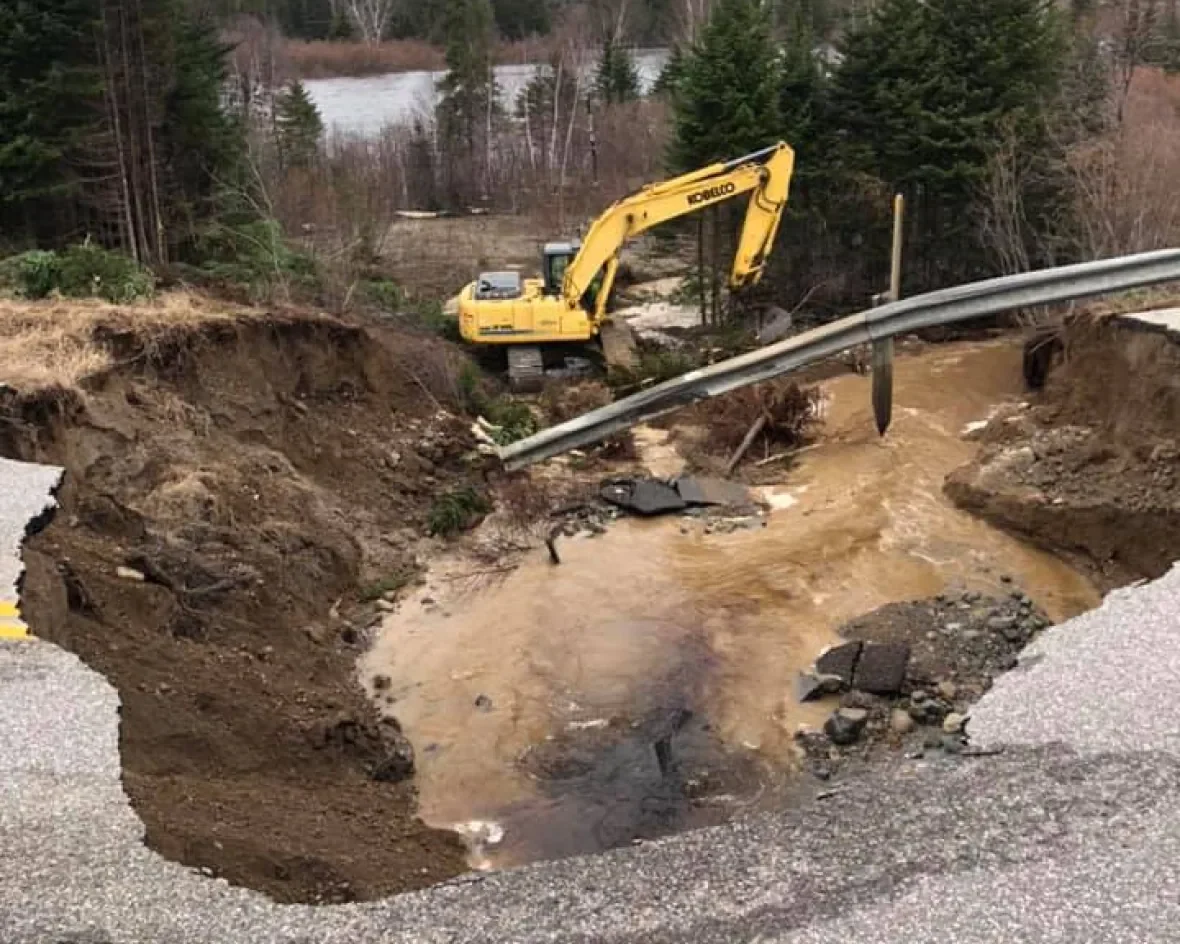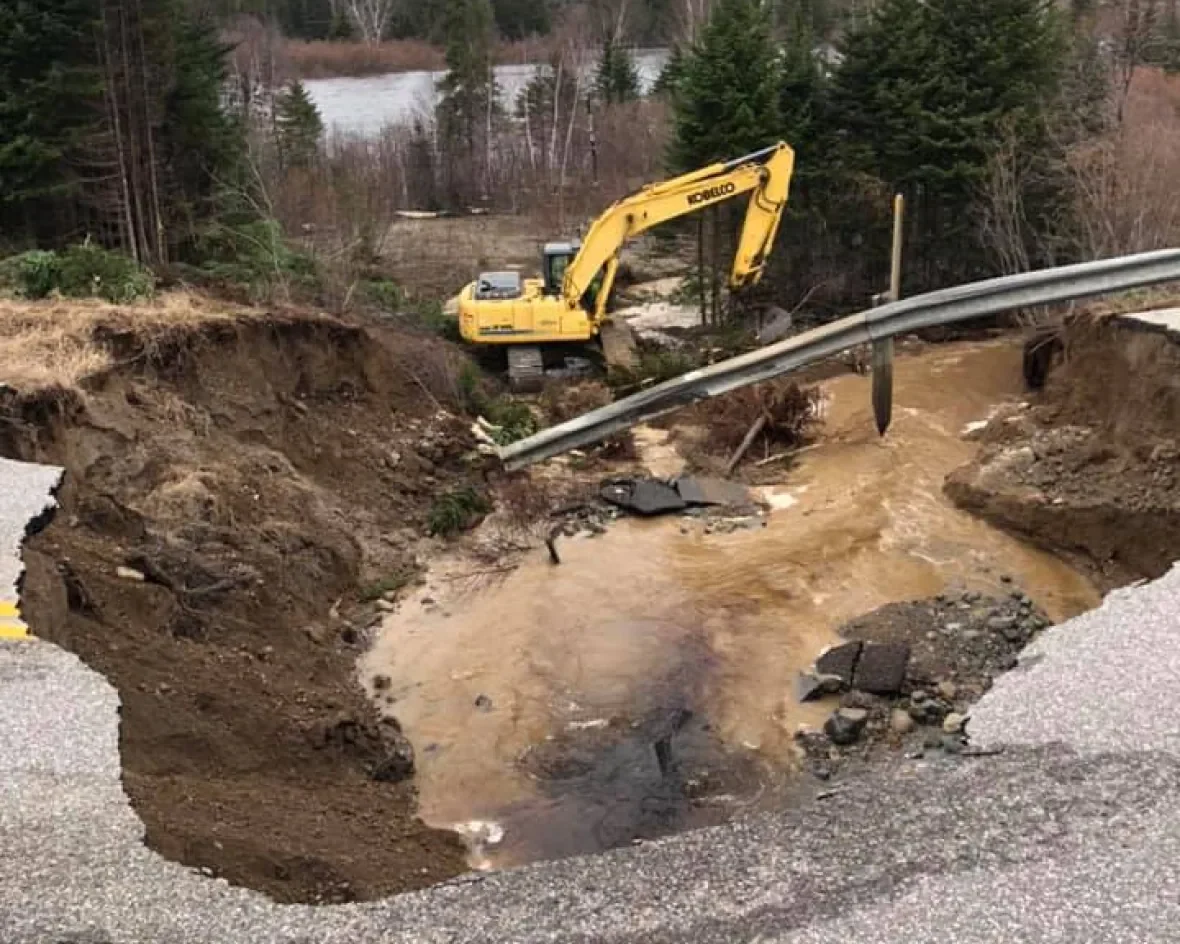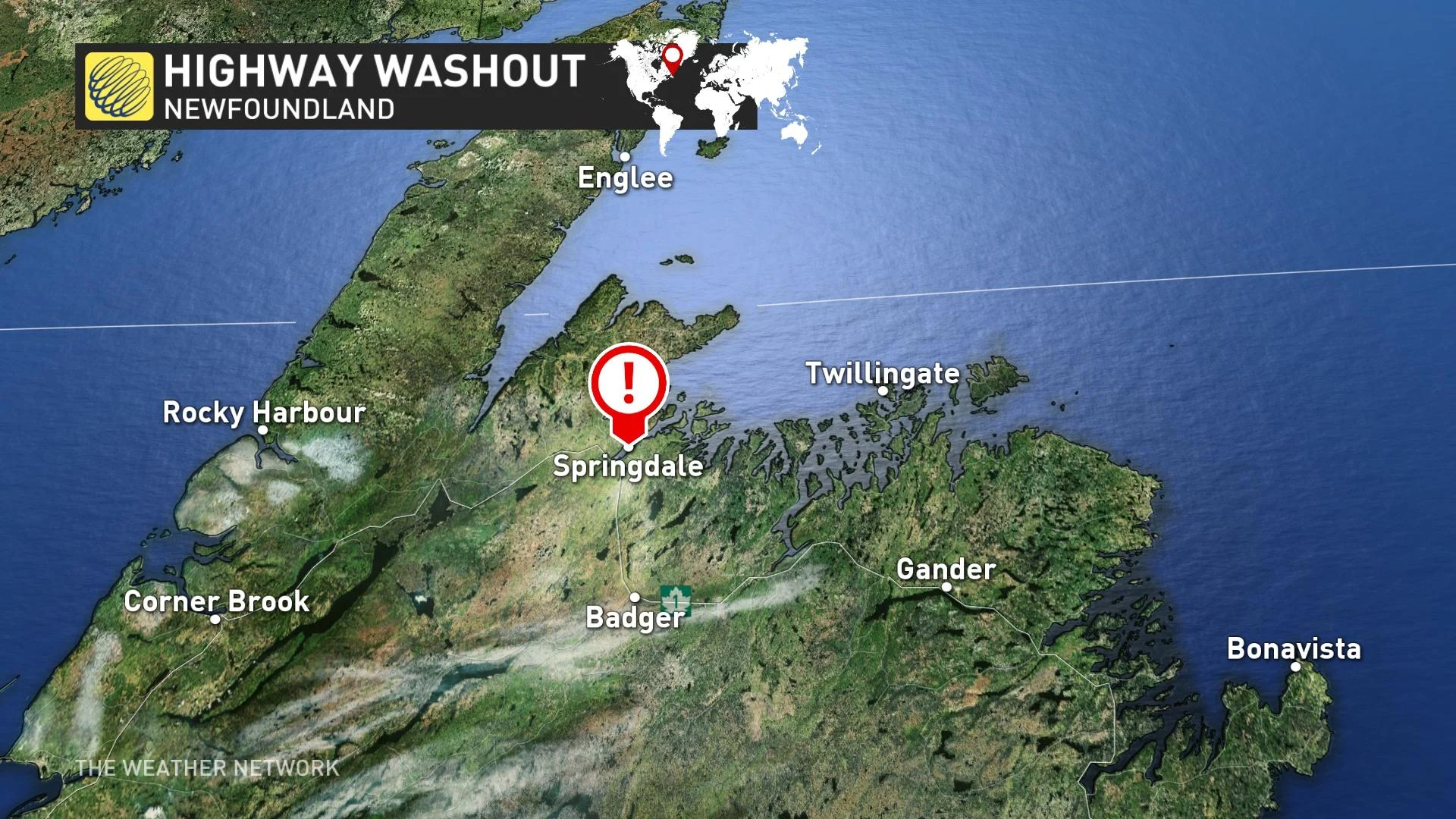
Traffic resumes after intense flooding rips out part of TCH near Springdale
Traffic has resumed on the Trans-Canada Highway in central Newfoundland, after heavy rains helped cause a washout that replaced the road just west of Springdale junction with a canyon and rendered it impassable.
That section of highway, near the Blue Canoe campground, caved early Tuesday morning, with the RCMP reporting it gave way as two transport trucks were driving across it. A pickup truck that managed to make it across ahead of the trailers was also damaged, but police said no one was hurt.
On Tuesday morning, Moody Roberts of Springdale, after hearing about the washout, stopped by to see if everyone was OK. He was greeted by a gaping hole, stretching across where the highway lanes once were, that he estimated was about 25 feet deep.

A new culvert, and the heavy equipment needed to fix the washout, were en route to the area Tuesday afternoon, according to the Department of Transportation. (Submitted by Moody Roberts)
"It's a fairly big hole. Its pavement is completely gone, except for just a sidewalk on the opposite side. The railing is all gone," said Roberts.
A culvert and the heavy equipment needed to install it and repair the highway made their way to the washed out strip Tuesday afternoon.
Because the highway is the sole cross-island connection, traffic had become backed up on both sides of the chasm. Some truck drivers had been stuck since 6 a.m.
In a statement shortly after 6 p.m. the RCMP said the highway was open to one lane.
"Motorists who must travel are asked to reduce speed in the area and to expect delays," says the statement.

HEAVY RAINS IN THE REGION
The day before the washout, Roberts said, heavy rain fell throughout the day, and combined with snow melt may have overwhelmed the small culvert that used to run underneath that section of the highway.
"It's unusual, the amount of water that got built up on the opposite side. I guess it just kind of busted right out there," Roberts said.
Seventy-two millimetres of rain fell in the area over the last few days, according to Environment Canada meteorologist Rodney Barney.
Nearby, the town of King's Point was in a state of emergency overnight Tuesday, after it was temporarily cut off from the outside world.

The highway gave way as two tractor trailers crossed it, but the RCMP say no one in the vehicles was hurt. (Submitted by Moody Roberts)
The only road in or out of King's Point, Highway 391, was closed overnight due to a washout about one kilometre outside of town, with one lane reopening around 5 a.m. Tuesday.
"We've had serious rainfalls before, but this is really bad, I gotta say," said Mayor Perry Gillingham on Tuesday morning.
The washout led Gillingham to call the state of emergency, which was lifted around 8 a.m.
"There's quite a bit of damage, and flooded basements in town, and it's just — it's unreal, how much rain can fall in a short period of time," he told CBC Radio's Newfoundland Morning.
RAINFALL TO EASE
While the downpour's damaging effects were being felt in central Newfoundland, eastern Newfoundland has racked up impressive totals amid five straight days of rain.
From Friday to Tuesday morning, St. John's has had 132 millimetres of rain, according to Barney. The Goobies area has had more than 150 millimetres, he said.
Barney said the drawn-out period of dreariness, with about 20 to 30 millimetres falling per day, has helped keep widespread damage at bay.
"We are of course seeing some impacts, but certainly a lot less widespread than it would be, say, than if that amount of rain had fallen in a much shorter period," he said.
The rain eased to drizzle on Tuesday in central Newfoundland, and rainfall warnings for the northeast Avalon ended by noon. Those rainfall warnings remained in place for the southern Avalon and Burin peninsulas Tuesday, as Barney said those regions would see up to another 25 millimetres before the rain moves off.
But don't expect the sun to emerge for any stretch of time once the rain stops.
"By and large we're looking at a very, very cloudy week," said Barney, adding the eastern half of the island will be the greyest, while the west coast and Northern Peninsula could see some sunny breaks in the days ahead.
This article was originally published by CBC News





